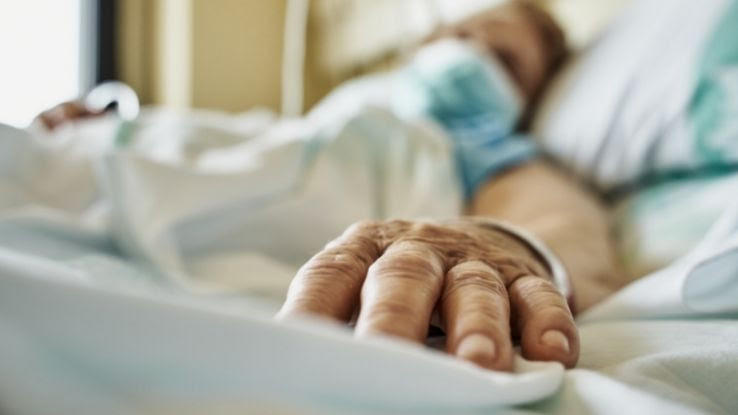The Definitive Guide to Pacific Prime
The Definitive Guide to Pacific Prime
Blog Article
Pacific Prime Can Be Fun For Everyone
Table of ContentsThe 5-Minute Rule for Pacific PrimePacific Prime for DummiesAn Unbiased View of Pacific PrimeThe Pacific Prime StatementsWhat Does Pacific Prime Do?

This is because the data were gathered for a duration of strong financial efficiency. Of the estimated 42 million people that were without insurance, almost concerning 420,000 (concerning 1 percent) were under 65 years of age, the age at which most Americans end up being qualified for Medicare; 32 million were grownups in between ages 18 and 65, about 19 percent of all grownups in this age; and 10 million were youngsters under 18 years old, about 13.9 percent of all children (Mills, 2000).
These quotes of the variety of individuals without insurance are generated from the annual March Supplement to the Present Populace Study (CPS), performed by the Census Bureau. Unless otherwise noted, national quotes of people without medical insurance and proportions of the population with different type of protection are based upon the CPS, one of the most extensively used source of quotes of insurance policy coverage and uninsurance rates.
The Single Strategy To Use For Pacific Prime

Still, the CPS is especially useful because it generates yearly price quotes reasonably promptly, reporting the previous year's insurance policy protection approximates each September, and due to the fact that it is the basis for a consistent set of quotes for even more than twenty years, enabling analysis of trends in protection in time. For these reasons, along with the substantial use of the CPS in other researches of insurance coverage that are offered in this record, we rely on CPS price quotes, with restrictions noted.

The price quote of the number of without insurance people broadens when a population's insurance condition is tracked for several years. Over a three-year period starting early in 1993, 72 million people, 29 percent of the united state populace, lacked protection for at least one month. Within a single year (1994 ), 53 million individuals experienced a minimum of a month without insurance coverage (Bennefield, 1998a)
Six out of every 10 without insurance adults are themselves employed. Functioning does enhance the chance that one and one's family members will certainly have insurance, it is not a warranty. Also members of family members with two permanent wage earners have virtually a one-in-ten chance of being without insurance (9.1 percent uninsured rate) (Hoffman and Pohl, 2000).
Pacific Prime Can Be Fun For Everyone
New immigrants make up a significant proportion of people without medical insurance. One analysis has actually connected a significant portion of the recent development in the dimension of the U.S. uninsured populace to immigrants who showed up in the nation between 1994 and 1998 (Camarota and Edwards, 2000). Recent immigrants (those that concerned the USA within the previous four years) do have a high price of being without insurance (46 percent), however they and their kids account for simply 6 percent of those without insurance policy nationally (Holahan et al., 2001).
The connection between medical insurance and access to care is well developed, as recorded later in this phase. The partnership in between health and wellness insurance policy and wellness end results is neither straight neither straightforward, an extensive clinical and wellness services research literary works links health insurance policy protection to improved accessibility to care, far better top quality, and enhanced personal and population wellness standing.
Degrees of evaluation for checking out the results of uninsurance. This conversation of health and wellness insurance policy protection focuses mainly on the U.S. population under age 65 because essentially all Americans 65 and older have Medicare or various other public insurance coverage. It concentrates particularly on those without any type of wellness insurance for any kind of size of time.
The 10-Minute Rule for Pacific Prime
The problems faced by the underinsured are in some areas similar to those faced by the without insurance, although they are normally less extreme. Health and wellness insurance coverage, nonetheless, is neither essential nor sufficient to obtain access to clinical solutions. The independent and direct result of health and wellness insurance protection on access to health and wellness services is well developed.
Others will get the health and wellness care they require also without medical insurance, by spending for it out of pocket or seeking it from service providers that use care free or at very subsidized rates. try this website For still others, medical insurance alone does not make sure invoice of care because of other nonfinancial barriers, such as an absence of health and wellness care suppliers in their neighborhood, limited accessibility to transport, illiteracy, or linguistic and social distinctions.
3 Simple Techniques For Pacific Prime
Official study concerning without insurance populaces in the USA dates to the late 1920s and very early 1930s when the Board on the Price of Treatment produced a collection of records concerning funding physician office sees and hospitalizations. This problem came to be salient as the numbers of clinically indigent climbed up during the Great Clinical depression.
Report this page